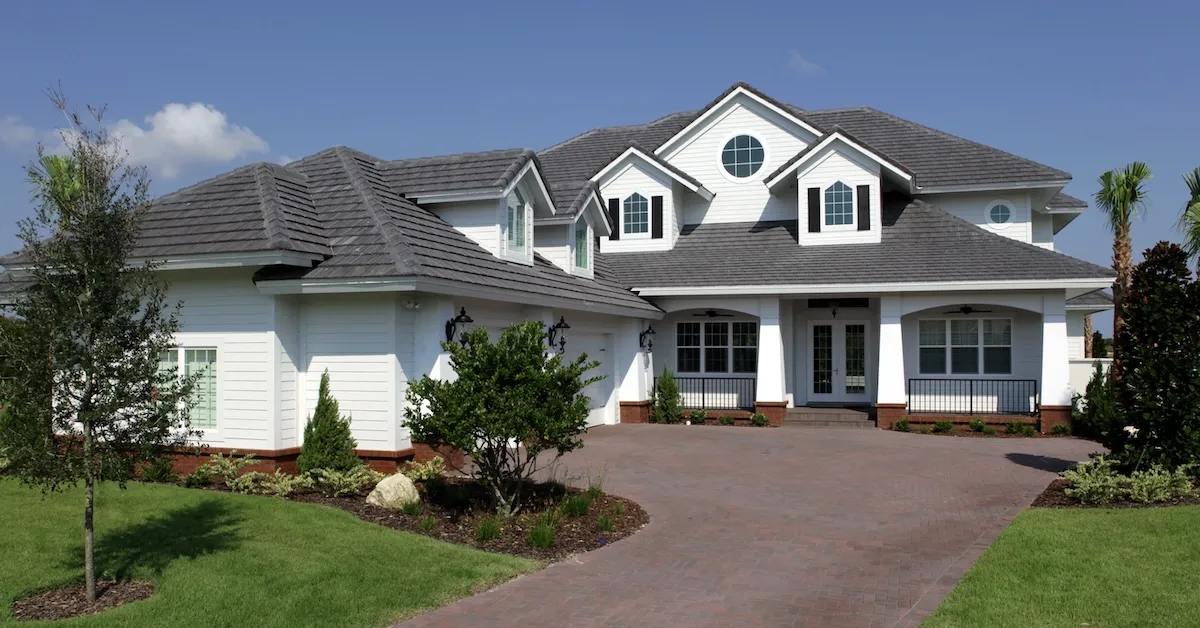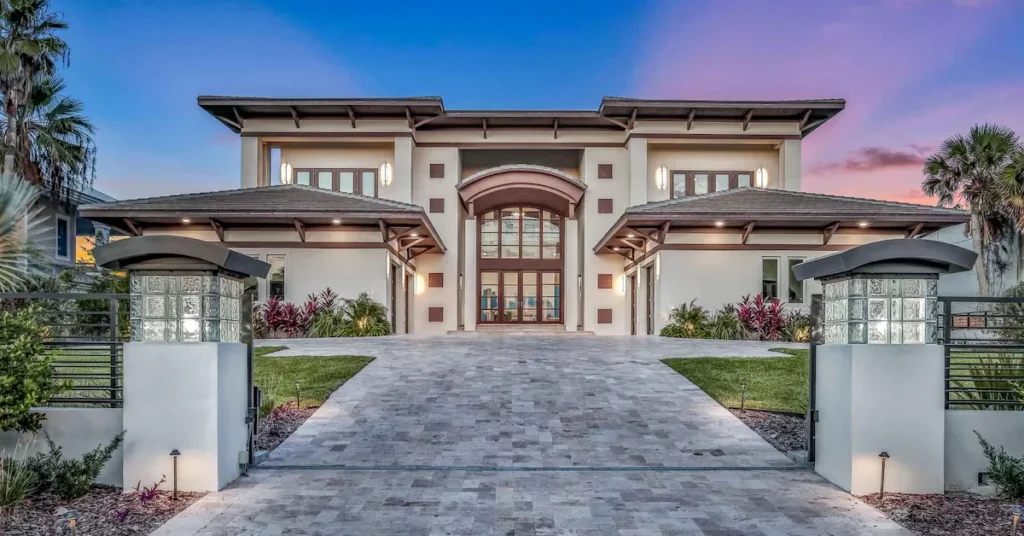The adoption of solar energy is on the rise in recent years among Florida business owners and homeowners seeking to reduce energy costs, increase property value, and promote environmental sustainability.
Dubbed the Sunshine State, Florida is a solar energy goldmine with over 200 sunny days every year that allow solar panels to operate efficiently year-round. With rising utility costs, growing green energy tax incentives, and better energy storage technology that allows clean energy from the sun to be sold back to the electricity grid, more and more Florida homeowners and businesses are taking advantage of the financial benefits of going solar.
A Bit of History
Serious interest in solar energy as a source of electrical power began in the 1970s in California, when an energy crisis caused oil shortages severely affecting daily life and economic activities of both urban centers and rural areas. This prompted the creation of the first pilot programs and solar companies through the next few decades.
By 2006, the administration of Governor Arnold Schwarzenegger launched the California Solar Initiative (CSI), which encouraged California residents to invest in solar-powered roof technology and solar water heating systems. The rebates and other incentives continued in the following years as solar farms and other infrastructure for energy sources with low carbon emissions.
Given high electricity costs and increased state mandates as well as local government policies to reduce pollution and the carbon footprint, California businesses and homes have continued to widely adopt solar as a sustainable and renewable energy source. As of 2020, all new homes in California require solar panels, mainly solar panel roof installations.

Behind California, Texas is also a strong adopter of solar energy, both in its urban areas and large number of homesteads. Solar energy began garnering interest in the late 2000s, and in the 2010s, it started to quickly grow as modern solar panel roof tiles and other solar roof technologies became available, government deregulation reached the solar industry, and large utility-scale solar farms were created.
Florida is right behind California and Texas. While it experienced a slower adoption of solar energy due to state policies and utility control, solar panel roof setups are becoming increasingly common. Since the late 2010s and early 2020s, major utility companies have invested in building large-scale solar fields.
In Florida’s tropical climate, hurricanes frequently lead to power outages that can last multiple weeks. Solar energy technology that can store energy has been key in encouraging Florida residents to invest in solar energy as a resilient and sustainable electrical energy backup, especially for those living in remote areas or off grid in houses, RVs or boats.
Amid growing interest in going solar, government agencies, universities, research institutions, private companies, and nonprofits continue to invest in solar energy research, and new technologies constantly emerge as a result. More recently, AI technology has been increasingly leveraged by the solar industry, mainly to perform environmental impact assessments and optimize energy efficiency.
Ready for your dream design?
6 Reasons Why Solar Energy is Growing in Popularity in Florida
1. Abundant Sunshine
With an average of over 230 sunny days every year, Florida earned its name of the Sunshine State. The consistent natural light allows solar panels to be highly effective in harnessing the energy of the sun. Homeowners and businesses can produce substantial solar energy to reduce their energy bill in the face of higher utility prices as well as their reliance on the electricity grid, which is a great option in an area as prone to hurricanes and tropical storms as Florida.
Central Florida is great for solar, as it gets over 2,900 yearly hours of sunshine. Inland cities like Orlando, Winter Park, and Lake Mary offer slightly better solar energy efficiency than those in the coastal region like St. Augustine, Flagler Beach, Ormond Beach, Daytona Beach Shores, and New Smyrna Beach, as they have a bit more consistent sunshine and fewer marine layer clouds and fog that form in the proximity of ocean waters.
Nevertheless, there are ways to maximize solar energy performance when designing your dream home through elements like window design, home orientation, and building materials. Energy efficiency can be improved by optimizing solar roof design tilt and orientation for sun exposure and installing a cool roof under the solar panels to reflect sunlight and reduce heat buildup.
Using high R-value wall insulation systems helps resist heat transfer, and the right air sealing and home insulation minimize energy loss through vents, gaps, or cracks. Selecting building materials that absorb heat and a sealed building envelope also improves comfort and air quality while minimizing thermal leaks and energy costs.
For oceanfront homes, interior and exterior cladding applied on a beach home facade and overall house structure can help prevent degradation and dissipated heat. Selecting certified solar panels and equipment that are corrosion resistant and successfully underwent a salt spray test ensures that they can be exposed to the ocean mist in coastal homes.
Strategic window placement allows for sunlight and ventilation maximization, and deep eaves or overhangs shade windows from the high summer sun but still allow the rays from the lower winter sun to come through. Prioritizing double- or triple-pane window designs with low-E glass provides extra insulation and energy retention.
Windows designed for coastal areas also help prevent salt and water intrusion. Site design and yard landscaping that includes plants and trees that act as windbreaks and are tolerant or resistant to the coastal environment also help protect the house from the elements.
2. Financial Incentives
There are several state programs and federal incentives, like tax credit and tax exemption opportunities, federal grants, and government financial programs, to make the solar installation process more affordable. Some of these financial incentives include options to deduct part of the solar panel installation cost from taxes or avoid paying sales tax on solar energy equipment.
3. Net Metering Option
Florida homeowners and businesses can sell the excess electricity generated by solar panels back to the grid, which is called net metering. This is a great incentive for going solar, as they can maximize their energy savings on cloudy days and periods of low energy production and reduce their overall utility bill.

4. Off-Grid Living
The growing interest in living off-grid and being energy independent is also a contributing factor in the rise of solar energy in Florida. Many choose to live in a yacht club as a liveaboard on a sailboat or motorboat, others prefer the RV or van life, but all often rely on solar energy when traveling and also while staying at the marina dock or RV park to keep their electricity costs down.
Homesteading and rural lifestyle choices also prioritize sustainable living and minimal reliance on public utilities. A solar battery for energy storage helps ensure the power stays on when the grid is down, which is especially important in Florida given its propensity to hurricanes and tropical storms.
5. Increasing Property Values
Oftentimes, homes with solar equipment already installed see their value go up, making solar energy an attractive offer for real estate investors or Florida homeowners who see their property as a real estate investment.
Equipment like solar panels and UV-blocking or tinted glass can be found in commercial buildings or luxury waterfront homes that have numerous, large windows to maximize the river or ocean views. They are also commonly used in home addition projects like a lanai or enclosed patio.

6. Resilience to Hurricanes
Hurricanes and storms are a common occurrence in Florida, often resulting in extended power outages and the need for emergency alternatives to generate electricity. While solar panel roof systems and ground-mounted solar panels are the most common, there are modern solar panel roof tiles designed to withstand Florida’s strong weather conditions while providing energy efficiency and energy backup options in case of power outages due to storm surge or strong winds.
New technologies are constantly emerging, like solar energy systems with battery storage and impact windows that integrate solar energy technology. These hurricane windows can resist high winds, avoiding water and moisture infiltration, and are simultaneously low-E windows (low-emissivity) as they contain a glass film or coating that blocks UV light and infrared light, reducing heat and generating small amounts of power.
Our Expertise
Architect Benjamin Butera has been a pioneer in the architecture field since the beginning of his career over 45 years ago. His professional experience became the gold standard for industry accreditation for out-of-state architects seeking to relocate or practice in Florida. His expertise was instrumental in the land development and urban planning of the city of Palm Coast in Volusia County, and his numerous architecture designs for custom-built homes, commercial buildings, and planned communities have shaped Central Florida and its coastal area.
Driven by his passion for architecture and design innovation, he dove into the topic of solar energy as early as the 1980s by writing a book called “Energy from the Sun”, in which he explored the sustainability opportunities and potential for decreased contamination that this renewable resource had to offer.
Our architecture firm is always in the know about solar roof design trends and architecture technologies related to solar energy. Our design portfolio contains multiple passive design projects to maximize natural energy sources and minimize energy waste. Our signature custom home designs take into consideration functional elements like energy efficiency, hurricane safety, and structural design and combine them with timeless architecture elegance and exquisite interior design.
Contact us to build your dream home or commercial building in Central Florida!



